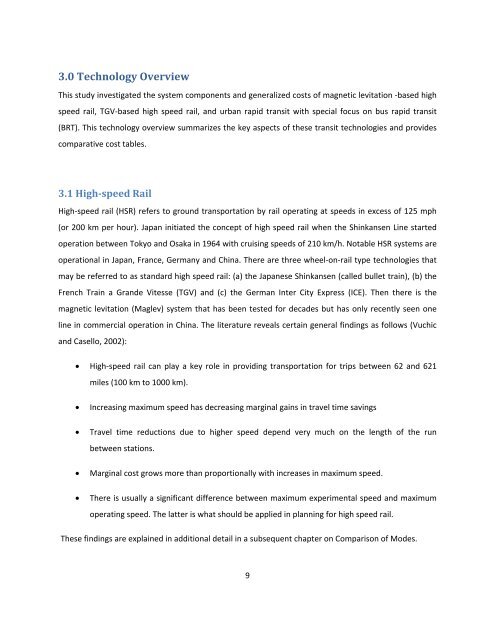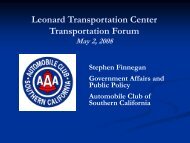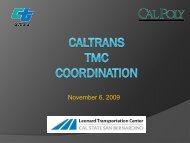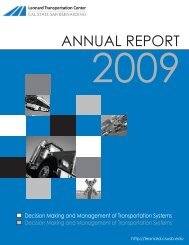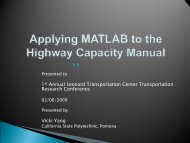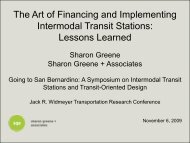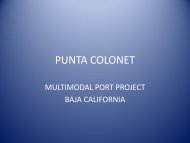Preliminaries to a Feasibility Analysis of the Maglev Proposal of The ...
Preliminaries to a Feasibility Analysis of the Maglev Proposal of The ...
Preliminaries to a Feasibility Analysis of the Maglev Proposal of The ...
You also want an ePaper? Increase the reach of your titles
YUMPU automatically turns print PDFs into web optimized ePapers that Google loves.
3.0 Technology Overview<br />
This study investigated <strong>the</strong> system components and generalized costs <strong>of</strong> magnetic levitation ‐based high<br />
speed rail, TGV‐based high speed rail, and urban rapid transit with special focus on bus rapid transit<br />
(BRT). This technology overview summarizes <strong>the</strong> key aspects <strong>of</strong> <strong>the</strong>se transit technologies and provides<br />
comparative cost tables.<br />
3.1 Highspeed Rail<br />
High‐speed rail (HSR) refers <strong>to</strong> ground transportation by rail operating at speeds in excess <strong>of</strong> 125 mph<br />
(or 200 km per hour). Japan initiated <strong>the</strong> concept <strong>of</strong> high speed rail when <strong>the</strong> Shinkansen Line started<br />
operation between Tokyo and Osaka in 1964 with cruising speeds <strong>of</strong> 210 km/h. Notable HSR systems are<br />
operational in Japan, France, Germany and China. <strong>The</strong>re are three wheel‐on‐rail type technologies that<br />
may be referred <strong>to</strong> as standard high speed rail: (a) <strong>the</strong> Japanese Shinkansen (called bullet train), (b) <strong>the</strong><br />
French Train a Grande Vitesse (TGV) and (c) <strong>the</strong> German Inter City Express (ICE). <strong>The</strong>n <strong>the</strong>re is <strong>the</strong><br />
magnetic levitation (<strong>Maglev</strong>) system that has been tested for decades but has only recently seen one<br />
line in commercial operation in China. <strong>The</strong> literature reveals certain general findings as follows (Vuchic<br />
and Casello, 2002):<br />
• High‐speed rail can play a key role in providing transportation for trips between 62 and 621<br />
miles (100 km <strong>to</strong> 1000 km).<br />
• Increasing maximum speed has decreasing marginal gains in travel time savings<br />
• Travel time reductions due <strong>to</strong> higher speed depend very much on <strong>the</strong> length <strong>of</strong> <strong>the</strong> run<br />
between stations.<br />
• Marginal cost grows more than proportionally with increases in maximum speed.<br />
• <strong>The</strong>re is usually a significant difference between maximum experimental speed and maximum<br />
operating speed. <strong>The</strong> latter is what should be applied in planning for high speed rail.<br />
<strong>The</strong>se findings are explained in additional detail in a subsequent chapter on Comparison <strong>of</strong> Modes.<br />
9


